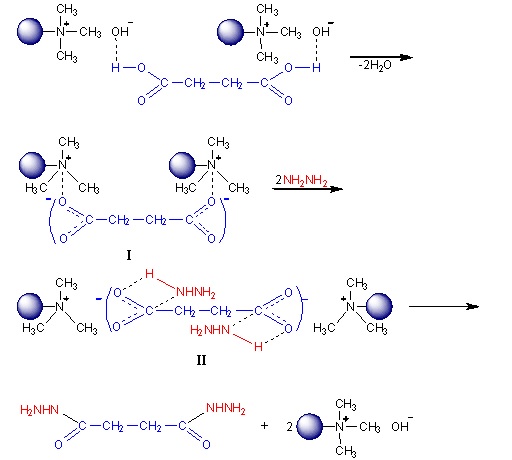An Efficient Ion-Exchange Resin Catalysts for the Liquid-Phase Selective Hydrazinolysis of Succinic Acid
DOI:
https://doi.org/10.31489/2959-0663/1-24-5Keywords:
succinic acid dihydrazide, hydrazinolysis, heterogenious catalyst, ion exchange resins, supramolecular complexesAbstract
Dicarboxylic acid dihydrazides are widely used as pharmaceutical intermediates, plant growth regulators, water-based coating additives, epoxy crosslinking agents. Dihydrazides are prepared by adding hydrazine hydrate to an acid halides and diesters. In this work the hydrazinolysis of succinic acid was studied using various ion exchange resins as catalysts, and the optimum conditions and the reaction mechanism were identified. Analysis of the initial reagents and the target product were performed out using photocolorimetric and IR spectroscopic methods, the composition of the target product was determined by elemental analysis. Hydrazinolysis of succinic acid were performed in aqueous medium in the temperature 90 °C for 3 h. Succinic acid conversion was 82–95 %, and the succiniyldihydrazide yield 61–93 %. It has been shown the efficient catalysts for the hydrazinolysis of succinic acid are AV-17-8, AN-31 and AN-1 anion exchangers. The highest succinyldihydrazide yield (93 %) was obtained with anion exchanger AV-17-8. On the basis of IR spectroscopic studies, a plausible process mechanism was suggested. A probable mechanism of the process with the formation of supramolecular complexes with the participation of substrates and fixed polymer-bound quaternary ammonium and hydroxyl ions of the anion exchanger was proposed. Thus, the most efficient method of succinic acid dihydrazide preparation has been proposed in comparison with known methods.

Downloads
Published
How to Cite
Issue
Section
License

This work is licensed under a Creative Commons Attribution-NonCommercial-NoDerivatives 4.0 International License.
This work is licensed under a Creative Commons Attribution-NonCommercial-NoDerivatives 4.0 International License.
Authors retain copyright and grant the journal right of first publication with the work simultaneously licensed under a Creative Commons Attribution License (CC BY-NC-ND 4.0) that allows others to share the work with an acknowledgement of the work's authorship and initial publication in this journal.



